
7 Powerful Reasons the Siberian Forest Cat Hypoallergenic Breed Is Perfect for Allergy Sufferers
What is a Siberian Forest Cat?
The Siberian Forest Cat comes from Russia and has been around for hundreds of years. These cats are medium to large, with strong bodies and thick, fluffy coats. Their coats have three layers, which help them stay warm in cold weather.
Why Are Siberian Forest Cats Hypoallergenic?
The Science Behind It
Siberian Forest Cat Hypoallergenic – Cats produce a protein called Fel d 1, which causes most cat allergies in humans. This protein is in their skin, saliva, and urine. When cats groom themselves, the protein gets on their fur, and when the fur sheds, the protein becomes airborne, leading to allergic reactions.
Siberian Forest Cat Hypoallergenic produces less Fel d 1 than most other cats. This means they are less likely to cause allergies. However, some people might still have reactions, as everyone’s sensitivity is different.
Benefits for Allergy Sufferers
- Fewer Allergic Reactions: Because they produce less Fel d 1, many people with mild to moderate cat allergies find they can live comfortably with a Siberian Forest Cat. This means fewer symptoms like sneezing, itchy eyes, and a runny nose.
- Better Quality of Life: For cat lovers who thought they could never have a cat, the Siberian Forest Cat offers a chance to enjoy a pet without constant allergic reactions.
- Loving Companions: Siberian Forest Cats are not just hypoallergenic; they are also very affectionate and playful. They love being with their human families and are known for their gentle nature.
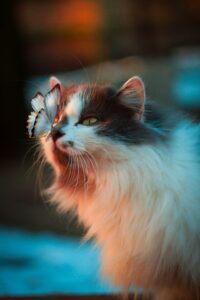
Managing Allergies Around Siberian Forest Cats
Even though Siberian Forest Cats are hypoallergenic, it’s still important to take some steps to reduce the risk of allergic reactions:
- Regular Grooming: Brush your cat often to reduce shedding and the spread of allergens. This also helps keep their coat beautiful.
- Clean Home: Keep your home clean by vacuuming often and using air purifiers to reduce allergens in the air.
- Cat-Free Zones: Have areas in your home, like your bedroom, where the cat is not allowed. This gives you a place to escape allergens.
- Wash Hands: Always wash your hands after handling your cat to avoid transferring allergens to your face.
- Vet Check-ups: Make sure your cat is healthy and free from any skin conditions that could increase allergen production.
Traits and Temperament of the Siberian Forest Cat
Besides being hypoallergenic, Siberian Forest Cats have wonderful personalities:
- Playful and Energetic: They love playing, climbing, and exploring. They are smart and can learn tricks.
- Affectionate and Loyal: They form strong bonds with their families and like to be involved in daily activities. They are sometimes described as “dog-like” because they follow their owners around.
- Good with Kids and Pets: Siberian Forest Cats are gentle and friendly, making them great for families with children and other pets. They adapt well to different environments.
- Vocal but Not Noisy: They communicate with various sounds, like chirps and trills, but are not overly noisy.
Health and Care
Siberian Forest Cats hypoallergenic are generally healthy but can have some health issues like any breed. Here’s how to care for them:
- Balanced Diet: Feed them high-quality food that meets their nutritional needs. Ask your vet for recommendations.
- Exercise: Keep them active with toys, climbing trees, and play sessions.
- Dental Care: Brush their teeth regularly and use dental treats to prevent dental problems.
- Grooming: Brush them a few times a week to keep their coat in good condition and reduce shedding.
Siberian Cats Physical Attributes
Siberian Forest Cats hypoallergenic have a distinct look that sets them apart from other breeds. Here are some of what they look like in simple terms:
- Size and Build: They are medium to large cats, with males weighing between 15-20 pounds and females between 10-15 pounds. They have a muscular and sturdy build, which helps them navigate their native cold environments.
- Coat: They have a thick triple-layered coat consisting of a dense undercoat, a middle layer, and a water-resistant top layer. This coat keeps them safe from bad weather.
- Eyes and Ears: Their eyes are large and expressive, often green, gold, or blue. Their ears are medium-sized with rounded tips and may have tufts of fur, giving them a lynx-like appearance.
- Tail: Their tails are long and bushy, providing additional warmth and balance.
Why Are Siberian Forest Cats Hypoallergenic?
The Science Behind It
Cats produce a protein called Fel d 1, which causes most cat allergies in humans. This protein is in their skin, saliva, and urine. When cats groom themselves, the protein gets on their fur, and when the fur sheds, the protein becomes airborne, leading to allergic reactions.
Siberian Forest Cats produce less Fel d 1 than most other cats. This means they are less likely to trigger allergies. However, some people might still have reactions, as everyone’s sensitivity is different.
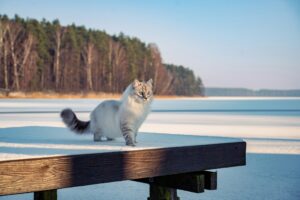
How to Know If You Are Allergic to a Siberian Cat
If you’re considering getting a Siberian Forest Cat hypoallergenic, it’s important to know if you are allergic. Here are some steps to determine if you might be allergic:
- Spend Time with the Cat: Visit a breeder or a friend who has a Siberian Forest Cat and spend a few hours with the cat. See if you experience any allergic reactions like sneezing, itching, or watery eyes.
- Allergy Testing: Visit an allergist for a skin or blood test to check if you are allergic to cat allergens. This can help you understand your sensitivity levels.
- Trial Period: Some breeders may offer a trial period where you can take the cat home for a few days to see if you have any reactions.
Benefits for Allergy Sufferers
- Fewer Allergic Reactions: Because they produce less Fel d 1, many people with mild to moderate cat allergies find they can live comfortably with a Siberian Forest Cat. This means fewer symptoms like sneezing, itchy eyes, and a runny nose.
- Better Quality of Life: For cat lovers who thought they could never have a cat, the Siberian Forest Cat offers a chance to enjoy a pet without constant allergic reactions.
- Loving Companions: Siberian Forest Cats are not just hypoallergenic; they are also very affectionate and playful. They love being with their human families and are known for their gentle nature.
Siberian Cats as Pets
Siberian Forest Cats make excellent pets due to their friendly and adaptable nature. Here are some reasons why they are great companions:
- Affectionate and Loyal: They form strong bonds with their families and like to be involved in daily activities. They like to stay close to their owners and often follow them around.
- Good with Children and Other Pets: Siberian Forest Cats are gentle and friendly, making them great for families with children and other pets. They are tolerant and adapt well to different environments.
- Playful and Energetic: They love playing, climbing, and exploring. They are intelligent can learn tricks and enjoy interactive toys.
Siberian Personality & Behaviour
Siberian Forest Cats have a wonderful personality that endears them to their owners:
- Playful: They are active and enjoy playing with toys and climbing trees. They have a lot of energy and need regular playtime to stay happy and healthy.
- Intelligent: They are smart and can be trained to do tricks and follow commands. They enjoy mental stimulation and problem-solving games.
- Affectionate: They love being close to their human families and often seek out attention and affection. They are known to be “dog-like” in their loyalty and behavior.
- Vocal but Not Noisy: They communicate with various sounds, including chirps and trills, but are not overly noisy. They use their voice to express their needs and emotions.
Grooming & Triple-layered Coats
The Siberian Forest Cat’s thick triple-layered coat requires some care, but it’s not as demanding as it might seem:
- Brushing: Brush your cat regularly to reduce shedding and prevent matting. This also helps keep their coat in good condition and reduces allergens.
- Bathing: Occasional baths can help reduce allergens, but not all cats enjoy water. If your cat tolerates it, a bath every few months can be beneficial.
- Nail Trimming: Trim your cat’s nails regularly to prevent them from becoming too long and causing discomfort.
- Ear Cleaning: Check your cat’s ears for dirt or wax build-up and clean them as needed to prevent infections.
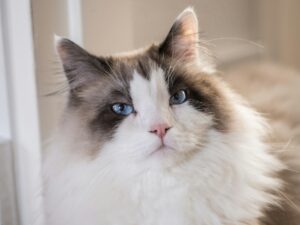
Managing Allergies Around Siberian Forest Cats
Even though Siberian Forest Cats are hypoallergenic, it’s still important to take some steps to reduce the risk of allergic reactions:
- Regular Grooming: Brush your cat often to reduce shedding and the spread of allergens. This also helps keep their coat beautiful.
- Clean Home: Keep your home clean by vacuuming often and using air purifiers to reduce allergens in the air.
- Cat-Free Zones: Have areas in your home, like your bedroom, where the cat is not allowed. This gives you a place to escape allergens.
- Wash Hands: Always wash your hands after handling your cat to avoid transferring allergens to your face.
- Vet Check-ups: Make sure your cat is healthy and free from any skin conditions that could increase allergen production.
The Joy of Owning a Siberian Forest Cat
Having a Siberian Forest Cat Hypoallergenic can be a wonderful experience. Their hypoallergenic qualities make them a great choice for people with allergies. They are loving, playful, and great companions for families and individuals alike.
Do Siberian Forest Cats Shed?
Siberian Forest Cats are known for their stunning looks and thick fur. But do these fluffy cats shed? Understanding their shedding habits can help you keep your home cleaner and your cat happier.
Understanding Cat Shedding: Siberian Forest Cat Hypoallergenic
What Is Shedding?
Shedding is when cats lose old or damaged fur to make way for new growth. It’s a natural and healthy process.
Why Do Cats Shed?
Cats shed to keep their coats fresh and to adjust to seasonal changes. Factors like diet, health, and environment also play a role.
Shedding Patterns of Siberian Forest Cat Hypoallergenic
Seasonal Shedding
These cats shed more during spring and fall to prepare for the warmer or colder weather.
Age-Related Shedding
Young cats shed less than adults. As Siberian Forest Cats grow older, their shedding becomes more noticeable.
Health-Related Shedding
Health issues like stress, allergies, or skin conditions can increase shedding.
Factors Influencing Shedding in Siberian Forest Cat Hypoallergenic
Diet and Nutrition
A good diet with plenty of omega-3 and omega-6 fatty acids can help reduce shedding and keep your cat’s coat healthy.
Environment
Indoor cats might shed year-round because they don’t experience natural seasonal changes. Outdoor cats usually shed according to the seasons.
Stress and Anxiety
Stress can cause cats to shed more. Changes in their routine, home, or family can trigger this.
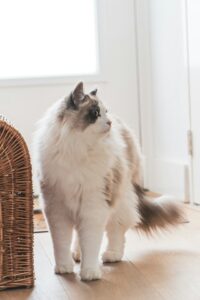
Managing Shedding in Siberian Forest Cat Hypoallergenic
Regular Grooming
Brush your cat regularly to remove loose fur and prevent tangles. This helps manage shedding and keeps your cat comfortable.
Bathing
Occasional baths can reduce shedding. Use shampoos made for cats to keep their fur healthy.
Proper Diet
Make sure your cat eats a balanced diet rich in nutrients. Supplements like fish oil can also help improve their coat.
Grooming Tips for Siberian Forest Cat Hypoallergenic
Tools and Supplies Needed
Get good grooming tools like a slicker brush, a comb, and grooming gloves. These will help you remove loose fur more effectively.
Step-by-Step Grooming Process
- Start with the slicker brush to get rid of loose hair.
- Use the comb to detangle any knots.
- Finish with the grooming gloves to smooth the coat.
Frequency of Grooming
Brush your Siberian Forest Cat at least twice a week. When your pet is shedding a lot, it’s best to brush them every day.
Dealing with Excessive Shedding
Identifying Excessive Shedding
Look for bald spots or a lot of fur around the house. This could mean your cat is shedding too much.
Common Causes of Excessive Shedding
Excessive shedding can be caused by allergies, poor diet, or health issues. Finding the cause is key to reducing it.
Solutions to Reduce Excessive Shedding
Improve your cat’s diet, reduce stress, and groom regularly. If shedding doesn’t improve, see a vet.

Health Issues Related to Shedding
Allergies
Allergies can cause your cat to shed more. Identifying and removing allergens can help.
Skin Conditions
Skin problems like dermatitis or fungal infections can lead to more shedding. These need prompt treatment.
Parasites
Parasites like fleas and mites can cause shedding. Keep your cat on a regular parasite prevention schedule.
When to See a Vet
Signs of Abnormal Shedding
If your cat has bald spots, skin irritation, or a sudden increase in shedding, it’s time to see a vet.
Veterinary Treatments
Vets can provide treatments for health issues causing excessive shedding. This might include medications or dietary changes.
Keeping Your Home Clean
Cleaning Tips for Cat Owners
Vacuum often and use lint rollers on furniture. Air purifiers can also help reduce fur and dander.
Reducing Hair Around the House
Designate certain areas for your cat to help keep fur contained. Regular grooming also helps reduce loose hair.
Best Products for Cleaning Cat Hair
Use vacuums designed for pet hair. Microfiber cloths and special pet hair removal tools are also useful.
Myths About Cat Shedding
Common Misconceptions
Some people think shaving a cat will reduce shedding. This can harm their skin and coat.
The Truth About Cat Shedding
Shedding is natural and can’t be completely stopped. But with good care, it can be managed.
The Benefits of Shedding
Natural Process for Cats
Shedding helps cats get rid of old fur, which is essential for a healthy coat.
Indicators of Health
Regular shedding can indicate that your cat is healthy. But watch for any drastic changes.
Comparing Shedding in Different Cat Breeds
Low-Shedding vs. High-Shedding Breeds
Breeds like the Sphynx shed very little, while breeds like the Maine Coon shed a lot.
How Siberian Forest Cats Compare
Siberians are moderate shedders. With proper grooming, their shedding can be kept under control.

Final Thoughts: Siberian Forest Cat Hypoallergenic
the Siberian Forest Cat Hypoallergenic is perfect for cat lovers with allergies. They produce less of the Fel d 1 protein, which means fewer allergic reactions. These cats are not only beautiful but also playful and gentle, making them great pets. With regular grooming, a clean home, and health check-ups, living with a Siberian Forest Cat Hypoallergenic can be a wonderful and enjoyable experience.
FAQS: Siberian Forest Cat Hypoallergenic
Are forest cats hypoallergenic? Forest cats, specifically Siberian Forest Cats, are considered hypoallergenic because they produce fewer allergens than most other cats.
What is the most hypoallergenic cat? The most hypoallergenic cat breeds include the Siberian Forest Cat, Balinese, and Devon Rex, as they produce fewer allergens.
Do Siberian forest cats shed? Yes, Siberian Forest Cats do shed, especially during seasonal changes, but regular grooming can help manage this.
What is the difference between a Siberian cat and a Siberian forest cat? There is no difference; “Siberian cat” and “Siberian Forest Cat” are two names for the same breed.
Why are Siberian cats so expensive? Siberian cats are expensive due to their rarity, desirable hypoallergenic qualities, and the costs associated with breeding and raising them.
What is the lifespan of a Siberian cat? The lifespan of a Siberian cat is typically between 12 to 15 years, though they can live longer with proper care.

I am a dedicated writer and expert in cats, with years of experience studying feline behavior, health, and breeds. Passionate about sharing my knowledge, I provide valuable insights and practical advice to help cat lovers understand and care for their furry companions. When not writing, I enjoy spending time with my beloved cats, continually learning and deepening my expertise.
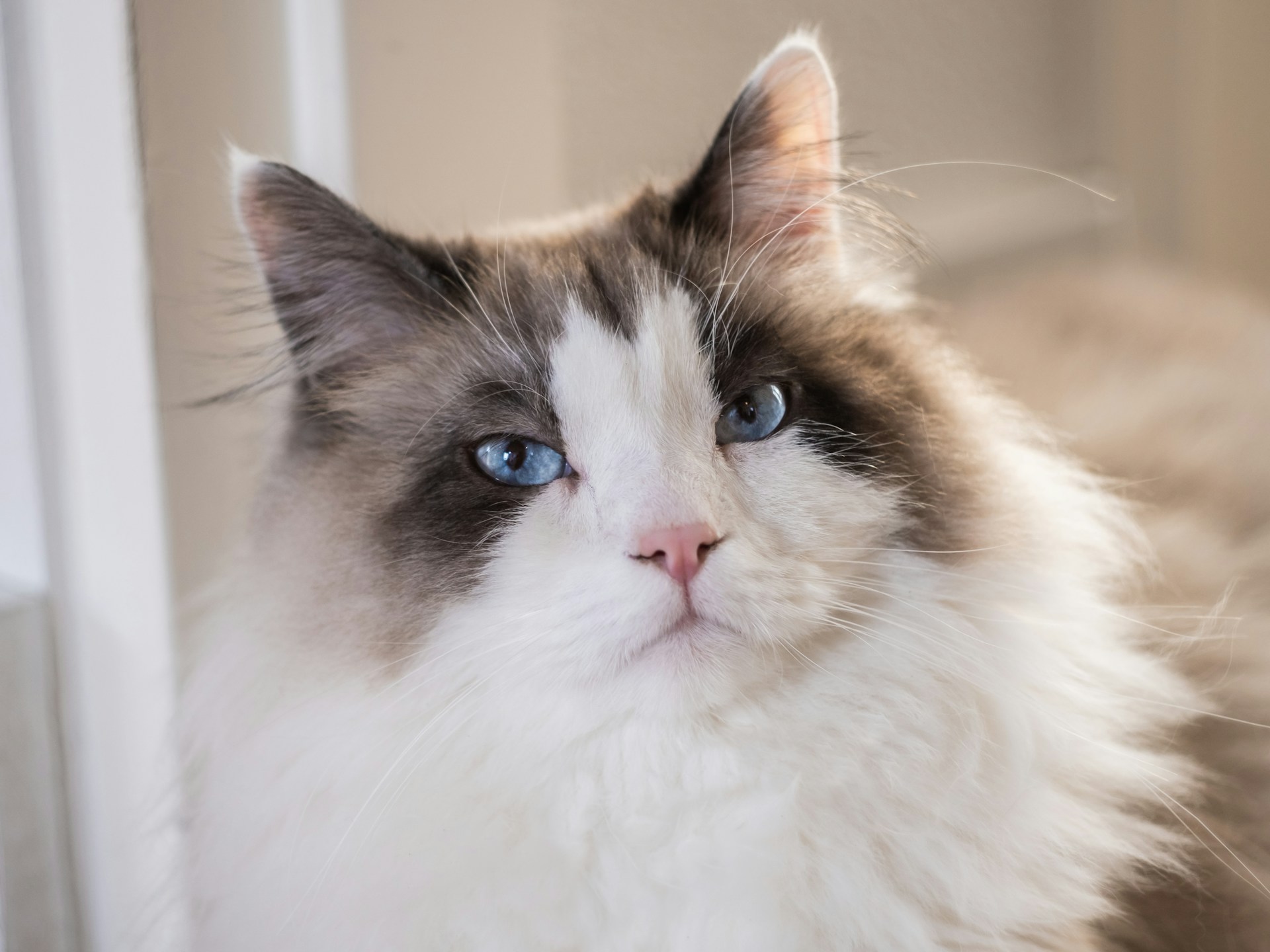
Leave a Reply